Collaborative CAD Synchronization Based on a Symmetric and Consistent Modeling Procedure
Abstract
:1. Introduction
2. Related Work
3. Overall Methodology and Related Concepts
3.1. Preliminaries
3.1.1. Related Definitions in Co-CAD Modeling
3.1.2. Dependency between Features
3.1.3. Operation Queue
3.2. Overall Methodology
- (1)
- Modeling features have a dependent relationship. Therefore, operations executed on features with dependency should follow the dependent relationship to keep a valid modeling procedure. As shown in Figure 5, the extruded cut feature depends on the initial boss feature. So, in the modeling procedure, the extruded cut must be executed after the creation of the boss feature. Otherwise, the cut operation is meaningless and non-executable.
- (2)
- Modeling operations may interact with each other. A different order of operations could lead to various modeling results. As shown in Figure 5, the different order of operations for the extruded cut and extruded boss create a dissimilar results model. Hence, a reasonable and unique modeling order should be determined in each site to produce consistent modeling results.
- (3)
- Moreover, during collaborative design, modeling operations from different sites may cause operational conflicts. As shown in Figure 6, operation O1 creates a rib feature in the slot of the initial model. O2 modifies the width of the initial model. Suppose O1 and O2 are from collaborative sites. Both operations are executable at their own sites but would trigger operational conflict because the rib does not intersect with the model after O2. In this situation, some operations are selected to be executed while others have to be revoked; all sites should conform to the same operation selection in their modeling procedure to maintain the consistency of the collaborative design results. In the case of Figure 6, either O1 or O2 has to be abandoned, and the other one is chosen to be executed.
- (4)
- The design history of a model is important information in Co-CAD, such as for the aspects of model reuse, modeling knowledge, intent sharing and so on. Therefore, it is important to maintain a consistent modeling history in each site of Co-CAD.
4. The Symmetric Synchronization Model
4.1. Causality Maintenance
4.2. Partial Concurrency Processing and Concurrent Operation Retrieving
4.3. Symmetric Concurrency Relationship Control Strategy
- (1)
- Whether the operations are executed on the same modeling feature, denoted as “F” in the grids in Figure 8;
- (2)
- Whether the topological entities referenced by the remote operation exist, denoted as “T” in the grids in Figure 8;
- (3)
- Whether the features that are executed have a dependent relationship, denoted as “D” in the grids in Figure 8.
- (1)
- Both operations are executed; rank the order of operations according to site priority. In Si, there is OaOb. In Sj, first execute an undo operation to Ob, then execute Oa, finally redo Ob. The final order of operations is OaOb and the result is Result(OaOb).
- (2)
- Execute the operation from the site with higher priority. In Si, Ob is undone. In Sj, Ob is undone and Oa is executed. The final order of operations is Oa and the result is Result(Oa).
- (3)
- Execute the operation with higher dependency priority. In Si, Ob is undone. In Sj, Ob is undone and Oa is executed. The final order of operations is Oa and the result is Result(Oa).
- (4)
- Both operations are executed and ranked according to dependency priority. In Si, there is OaOb. In Sj, first execute an undo operation to Ob, then execute Oa, finally redo Ob. When we redo Ob, it may be not executable because of Oa. In this situation, Ob needs to be abandoned. So, the final order of operations is OaOb or Oa and the result is Result(OaOb) or Result(Oa).
- (5)
- Both operations are executed and ranked in reversed order of site priority. In Si, first execute an undo operation to Oa, then execute Ob, finally redo Oa. In Si, there is ObOa. When we redo Oa, it may be not executable because of Ob. In this situation, Ob needs to be abandoned, then we can redo Oa. So, the final order of operations is ObOa or Oa and the result is Result(ObOa) or Result(Oa).
4.4. Operation Execution of Local and Remote Site
5. Case Study and Analysis
5.1. Case Study
- {O0,1,O0,2,O1,1,O0,5,O1,4,O0,6,O1,5,O0,8,O0,9,O0,10,O1,7,O1,8,O0,11,O0,13}.
- S0: {O0,1,O0,2,O1,1,O0,3,O1,3,O0,5,O1,4,O0,6,O1,5,O1,6,O0,7,O0,8,O0,9,O0,10,O1,7,O1,8,O0,11,O0,12,O0,13},
- S1: {O0,1,O0,2,O1,1,O0,3,O1,3,O0,5,O1,4,O0,6,O1,5,O1,6,O0,7,O0,8,O0,9,O0,10,O1,7,O1,8,O0,11,O0,12,O0,13}.
5.2. Comparisons and Analysis
5.2.1. General Discussion
5.2.2. Architecture and Strategy
5.2.3. Conflict Resolution
6. Conclusions
Acknowledgments
Author Contributions
Conflicts of Interest
References
- Zeng, Y.; Horváth, I. Fundamentals of next generation CAD/E systems. Comput. Aided Des. 2012, 44, 875–878. [Google Scholar] [CrossRef]
- Lee, S.; Jeong, T. Cloud-Based Parameter-Driven Statistical Services and Resource Allocation in a Heterogeneous Platform on Enterprise Environment. Symmetry 2016, 8, 103. [Google Scholar] [CrossRef]
- Li, W.D.; Mehnen, J. Cloud Manufacturing (Springer Series in Advanced Manufacturing); Springer: London, UK, 2013. [Google Scholar]
- Grudin, J. Computer-supported cooperative work: History and focus. Computer 1994, 27, 19–26. [Google Scholar] [CrossRef]
- Red, E.; French, D.; Hepworth, A. Multi-User Computer-Aided Design and Engineering Software Applications. In Cloud-Based Design and Manufacturing (CBDM); Dirk, S., Ed.; Springer: Berlin, Germany, 2014; pp. 25–62. [Google Scholar]
- Li, W.D.; Lu, W.F.; Fuh, J.Y.H.; Wong, Y.S. Collaborative computer-aided design—Research and development status. Comput. Aided Des. 2005, 37, 931–940. [Google Scholar] [CrossRef]
- He, F.Z.; Han, S.H. A method and tool for human-human interaction and instant collaboration in CSCW based CAD. Comput. Ind. 2006, 57, 740–751. [Google Scholar] [CrossRef]
- Gao, L.; Shao, B.; Zhu, L.; Lu, T.; Gu, N. Maintaining time and space consistencies in hybrid CAD environments: Framework and algorithms. Comput. Ind. 2008, 59, 894–904. [Google Scholar] [CrossRef]
- Wu, Y.; He, F.; Zhang, D.; Li, X. Service-oriented feature-based data exchange for cloud-based design and manufacturing. IEEE Trans. Serv. Comput. 2015. [Google Scholar] [CrossRef]
- Gao, L.; Yu, F.; Chen, Q.; Xiong, N. Consistency maintenance of Do and Undo/Redo operations in real-time collaborative bitmap editing systems. Clust. Comput. 2016, 19, 255–267. [Google Scholar] [CrossRef]
- Gao, L.; Yu, F.; Gao, L.; Xiong, N.; Yang, G. Consistency maintenance of compound operations in real-time collaborative environments. Comput. Electr. Eng. 2016, 50, 217–235. [Google Scholar] [CrossRef]
- Lv, X.; He, F.; Cai, W.; Chen, Y. A string-wise CRDT algorithm for smart and large-scale collaborative editing systems. Adv. Eng. Inform. 2016. [Google Scholar] [CrossRef]
- Hepworth, A.; Tew, K.; Trent, M.; Ricks, D.; Jensen, G. Model consistency and conflict resolution with data preservation in multi-user computer aided design. J. Comput. Inf. Sci. Eng. 2014, 14, 021008. [Google Scholar] [CrossRef]
- Gao, L.; Lu, T.; Gu, N. CLAF: Solving intention violation of step-wise operations in CAD groupware. Adv. Eng. Inform. 2010, 24, 121–137. [Google Scholar] [CrossRef]
- Jing, S.X.; He, F.Z.; Han, S.H. A method for topological entity correspondence in a replicated collaborative CAD system. Comput. Ind. 2009, 60, 467–475. [Google Scholar] [CrossRef]
- Li, X.; He, F.; Cai, X.; Zhang, D.; Chen, Y. A method for topological entity matching in the integration of heterogeneous cad systems. Integr. Comput. Aided Eng. 2013, 20, 15–30. [Google Scholar]
- Wang, Y.; Nnaji, B.O. Geometry-based semantic ID for persistent and interoperable reference in feature-based parametric modeling. Comput. Aided Des. 2005, 37, 1081–1093. [Google Scholar] [CrossRef]
- Tessier, S.; Wang, Y. Ontology-based feature mapping and verification between CAD systems. Adv. Eng. Inform. 2013, 27, 76–92. [Google Scholar] [CrossRef]
- Cheng, Y.; He, F.; Wu, Y. Meta-operation conflict resolution for human–human interaction in collaborative feature-based CAD systems. Clust. Comput. 2016, 19, 237–253. [Google Scholar] [CrossRef]
- Zhang, D.J.; He, F.Z.; Han, S.H.; Li, X.X. Quantitative optimization of interoperability during feature-based data exchange. Integr. Comput. Aided Eng. 2016, 23, 31–50. [Google Scholar] [CrossRef]
- Chen, Y.; He, F.; Wu, Y.; Hou, N. A local start search algorithm to compute exact Hausdorff Distance for arbitrary point sets. Pattern Recognit. 2017, 67, 139–148. [Google Scholar] [CrossRef]
- Red, E.; French, D.; Jensen, G.; Walker, S.; Madsen, P. Emerging design methods and tools in collaborative product development. J. Comput. Inf. Sci. Eng. 2013, 13, 031001. [Google Scholar] [CrossRef]
- Kim, B.C.; Mun, D. Stepwise volume decomposition for the modification of B-rep models. Int. J. Adv. Manuf. Technol. 2014, 75, 1393–1403. [Google Scholar] [CrossRef]
- Yeoun, Y.; Kim, B.C. CAD model simplification using feature simplifications. J. Adv. Mech. Des. Syst. 2016, 10, JAMDSM0099. [Google Scholar]
- Shen, W.M.; Hao, Q. Computer support collaborative design: Retrospective and perspective. Comput. Ind. 2008, 9, 855–862. [Google Scholar] [CrossRef]
- Dietrich, U.; Von Lukas, U.; Morche, I. Cooperative modeling with TOBACO. In Proceedings of the TeamCAD97 Workshop on Collaborative Design, Atlanta, GA, USA, 12–13 May 1997; pp. 115–122. [Google Scholar]
- Stork, A.; Lukas, U.; Schultz, R. Enhancing a commercial 3D CAD system by CSCW functionality for enabling co-operative modelling via WAN. In Proceedings of the ASME Design Engineering Technical Conferences, Atlanta, GA, USA, 13–16 September 1998. [Google Scholar]
- Stork, A.; Jasnoch, U. A collaborative engineering environment. In Proceedings of the TeamCAD97 Workshop on Collaborative Design, Atlanta, GA, USA, 12–13 May 1997; pp. 25–33. [Google Scholar]
- Li, M.; Gao, S.H.; Wang, C.C. Real-Time Collaborative Design With Heterogeneous CAD Systems Based on Neutral Modeling Commands. J. Comput. Inf. Sci. Eng. 2007, 7, 113–125. [Google Scholar] [CrossRef]
- Li, M.; Gao, S.; Fuh, J.Y.H. Replicated Concurrency Control for Collaborative Feature Modeling: A Fine Granular Approach. Comput. Ind. 2008, 59, 873–881. [Google Scholar] [CrossRef]
- Yang, L.; Ong, S.K.; Nee, A.Y.C. Coordination for replicated collaborative feature modeling. Int. J. Interact. Des. Manuf. 2010, 4, 191–200. [Google Scholar] [CrossRef]
- Li, D.; Li, R. An admissibility-based operational transformation framework for collaborative editing systems. Comput. Support. Coop. Work (CSCW) 2010, 19, 1–43. [Google Scholar] [CrossRef]
- Shao, B.; Li, D.; Gu, N. A sequence transformation algorithm for supporting cooperative work on mobile devices. In Proceedings of the 2010 ACM Conference on Computer Supported Cooperative Work, Savannah, GA, USA, 6–10 February 2010. [Google Scholar]
- Shao, B.; Li, D.; Lu, T.; Gu, N. An operational transformation based synchronization protocol for web 2.0 applications. In Proceedings of the ACM 2011 Conference on Computer Supported Cooperative Work, Hangzhou, China, 19–23 March 2011. [Google Scholar]
- Sun, D.; Sun, C.; Xia, S.; Shen, H. Creative conflict resolution in collaborative editing systems. In Proceedings of the ACM 2012 Conference on Computer Supported Cooperative Work, Seattle, WA, USA, 11–15 February 2012. [Google Scholar]
- Suleiman, M.; Cart, M.; Ferri’e, J. Serialization of concurrent operations in a distributed collaborative environment. In Proceedings of the International ACM SIGGROUP Conference on Supporting Group Work: The Integration Challenge, Phoenix, AZ, USA, 16–19 November 1997; pp. 435–445. [Google Scholar]
- Vidot, N.; Cart, M.; Ferri’e, J. Copies convergence in a distributed real-time collaborative environment. In Proceedings of the ACM 2000 Conference on Computer Supported Cooperative Work, Philadelphia, PA, USA, 2–6 December 2000; pp. 171–180. [Google Scholar]
- Preguica, N.; Marques, J.M.; Shapiro, M. A commutative replicated data type for cooperative editing. In Proceedings of the 29th IEEE International Conference on Distributed Computing Systems (ICDCS), Montreal, QC, Canada, 22–26 June 2009; pp. 395–403. [Google Scholar]
- Oster, G.; Urso, P.; Molli, P. Data consistency for P2P collaborative editing. In Proceedings of the 20th Anniversary Conference on Computer Supported Cooperative Work, Banff, AB, Canada, 4–8 November 2006; pp. 259–268. [Google Scholar]
- Weiss, S.; Urso, P.; Molli, P. Logoot-undo: Distributed collaborative editing system on p2p networks. IEEE Trans. Parallel Distrib. Syst. 2010, 21, 1162–1174. [Google Scholar] [CrossRef]
- Liu, H.; He, F.; Zhu, F. Consistency maintenance in collaborative CAD systems. Chin. J. Electron. 2013, 22, 15–20. [Google Scholar]
- Sun, C.; Xu, D. Operational transformation for dependency conflict resolution in real-time collaborative 3D design systems. In Proceedings of the ACM 2012 conference on Computer Supported Cooperative Work, Seattle, WA, USA, 11–14 February 2012. [Google Scholar]
- Brosch, P.; Seidl, M.; Wieland, K.; Wimmer, M.; Langer, P. We can work it out: Collaborative conflict resolution in model versioning. In ECSCW 2009; Springer: Vienna, Austria, 2009; pp. 207–214. [Google Scholar]
- Trappey, A.J.; Trappey, C.V.; Wu, C.-Y.; Fan, C.Y.; Lin, Y.-L. Intelligent patent recommendation system for innovative design collaboration. J. Netw. Comput. Appl. 2013, 36, 1441–1450. [Google Scholar] [CrossRef]
- Hepworth, A.I.; Tew, K.; Nysetvold, T.; Bennett, M.; Jensen, C.G. Automated conflict avoidance in multi-user CAD. Comput. Aided Des. Appl. 2014, 11, 141–152. [Google Scholar] [CrossRef]
- Moncur, R.A.; Jensen, C.G.; Teng, C.C.; Red, E. Data consistency and conflict avoidance in a multi-user CAx environment. Comput. Aided Des. Appl. 2013, 10, 727–744. [Google Scholar] [CrossRef]
- Yu, M.; Cai, H.; Ma, X.; Jiang, L. Symmetry-Based Conflict Detection and Resolution Method towards Web3D-based Collaborative Design. Symmetry 2016, 8, 35. [Google Scholar] [CrossRef]
- Cai, X.T.; Li, X.X.; He, F.Z. Flexible concurrency control for legacy CAD to construct collaborative CAD environment. J. Adv. Mech. Des. Syst. 2012, 6, 324–339. [Google Scholar] [CrossRef]
- Lee, H.; Kim, J.; Banerjee, A. Collaborative intelligent CAD framework incorporating design history tracking algorithm. Comput. Aided Des. 2010, 42, 1125–1142. [Google Scholar] [CrossRef]
- Lamport, L. Time, clocks, and the ordering of events in a distributed system. Commun. ACM 1978, 21, 558–565. [Google Scholar] [CrossRef]
- Sun, C.; Zhang, Y.; Jia, X. A generic operation transformation scheme for consistency maintenance in real-time cooperative editing systems. In Proceedings of the International ACM SIGGROUP Conference on Supporting Group Work: The integration challenge, Phoenix, AZ, USA, 16–19 November 1997; pp. 425–434. [Google Scholar]
- Zhou, Y.; He, F.; Qiu, Y. Optimization of parallel iterated local search algorithms on graphics processing unit. J. Supercomput. 2016, 72, 2394–2416. [Google Scholar] [CrossRef]
- Zhou, Y.; He, F.; Qiu, Y. Dynamic Strategy based Parallel Ant Colony Optimization on GPUs for TSPs. Sci. China Inf. Sci. 2017, 60, 068102. [Google Scholar] [CrossRef]
- Cai, W.; He, F.; Lv, X. Multi-core Accelerated Operational Transformation for Collaborative Editing. In Proceedings of the International Conference on Collaborative Computing: Networking, Applications and Worksharing, Wuhan, China, 10–11 November 2015; Springer International Publishing: New York, NY, USA, 2015; pp. 121–128. [Google Scholar]
- Chen, G.; Li, G.; Wu, B.; Pei, S. A GPU-based computing framework for CSCW. In Proceedings of the 14th International Conference on Computer Supported Cooperative Work in Design, Shanghai, China, 14–16 April 2010; pp. 100–103. [Google Scholar]
- Pinheiro, A.; Desterro, F.; Santos, M.; Pereira, C.; Schirru, R. GPU-Based Parallel Computation in Real-Time Modeling of Atmospheric Radionuclide Dispersion. In Advances in Human Factors and System Interactions; Nunes, I.L., Ed.; Springer: Cham, Switzerland, 2017; Volume 497, pp. 323–333. [Google Scholar]
- Yan, X.; He, F.; Chen, Y.; Yuan, Z. An efficient improved particle swarm optimization based on prey behavior of fish schooling. J. Adv. Mech. Des. Syst. 2015, 9, JAMDSM0048. [Google Scholar] [CrossRef]
- Yan, X.; He, F.; Hou, N. A novel hardware/software partitioning method based on position disturbed particle swarm optimization with invasive weed optimization. J. Comput. Sci. Technol. 2017, 32, 340–355. [Google Scholar] [CrossRef]
- Yan, X.; He, F.; Hou, N.; Ai, H. An efficient particle swarm optimization for large scale hardware/software codesign system. Int. J. Coop. Inf. Syst. 2017. [Google Scholar]
- Wang, D.; Tan, D.; Liu, L. Particle swarm optimization algorithm: An overview. Soft Comput. 2017. [Google Scholar] [CrossRef]
- Mun, D.; Hwang, J.; Han, S. Protection of intellectual property based on a skeleton model in product design collaboration. Comput. Aided Des. 2009, 41, 641–648. [Google Scholar] [CrossRef]
- Cai, X.T.; Wang, S.; Lu, X.; Li, W.D. Parametric Encryption of CAD models in Cloud manufacturing environment. In Proceedings of the 20th International Conference on Computer Supported Cooperative Work in Design, Nanchang, China, 4–6 May 2016; pp. 551–556. [Google Scholar]
- Park, J.H.; Kim, H.; Kang, J. Security scheme based on parameter hiding technic for mobile communication in a secure cyber world. Symmetry 2016, 8, 106. [Google Scholar] [CrossRef]
- Li, K.; He, F. Robust Visual Tracking based on convolutional features with illumination and occlusion handing. J. Comput. Sci. Technol. 2017. accepted. [Google Scholar]
- Li, K.; He, F.; Yu, H.; Chen, X. A correlative classiers approach based on particle filter and sample set for tracking occluded target. Appl. Math. Ser. B 2017. accepted. [Google Scholar]
- Yu, H.; He, F.; Pan, Y.; Chen, X. An efficient similarity-based level set model for medical image segmentation. J. Adv. Mech. Des. Syst. 2016, 10, JAMDSM0100. [Google Scholar] [CrossRef]
- Li, K.; He, F.; Chen, X. Real-time object tracking via compressive feature selection. Front. Comput. Sci. 2016, 10, 689–701. [Google Scholar] [CrossRef]
- Sun, J.; He, F.Z.; Chen, Y.L.; Chen, X. A multiple template approach for robust tracking of fast motion target. Appl. Math. Ser. B 2016, 31, 177–197. [Google Scholar] [CrossRef]
- Ni, B.; He, F.Z.; Pan, Y.T.; Yuan, Z.Y. Using shapes correlation for active contour segmentation of uterine fibroid ultrasound images in computer-aided therapy. Appl. Math. J. Chin. Univ. 2016, 31, 37–52. [Google Scholar] [CrossRef]
- Ni, B.; He, F.Z.; Yuan, Z.Y. Segmentation of uterine fibroid ultrasound images using a dynamic statistical shape model in HIFU therapy. Comput. Med. Imaging Graph. 2015, 46, 302–314. [Google Scholar] [CrossRef] [PubMed]
- Zhang, D.J.; He, F.Z.; Han, S.H.; Zou, L.; Wu, Y.Q.; Chen, Y.L. An efficient approach to directly compute the exact Hausdorff distance for 3D point sets. Integr. Comput. Aided E 2017. accepted. [Google Scholar]

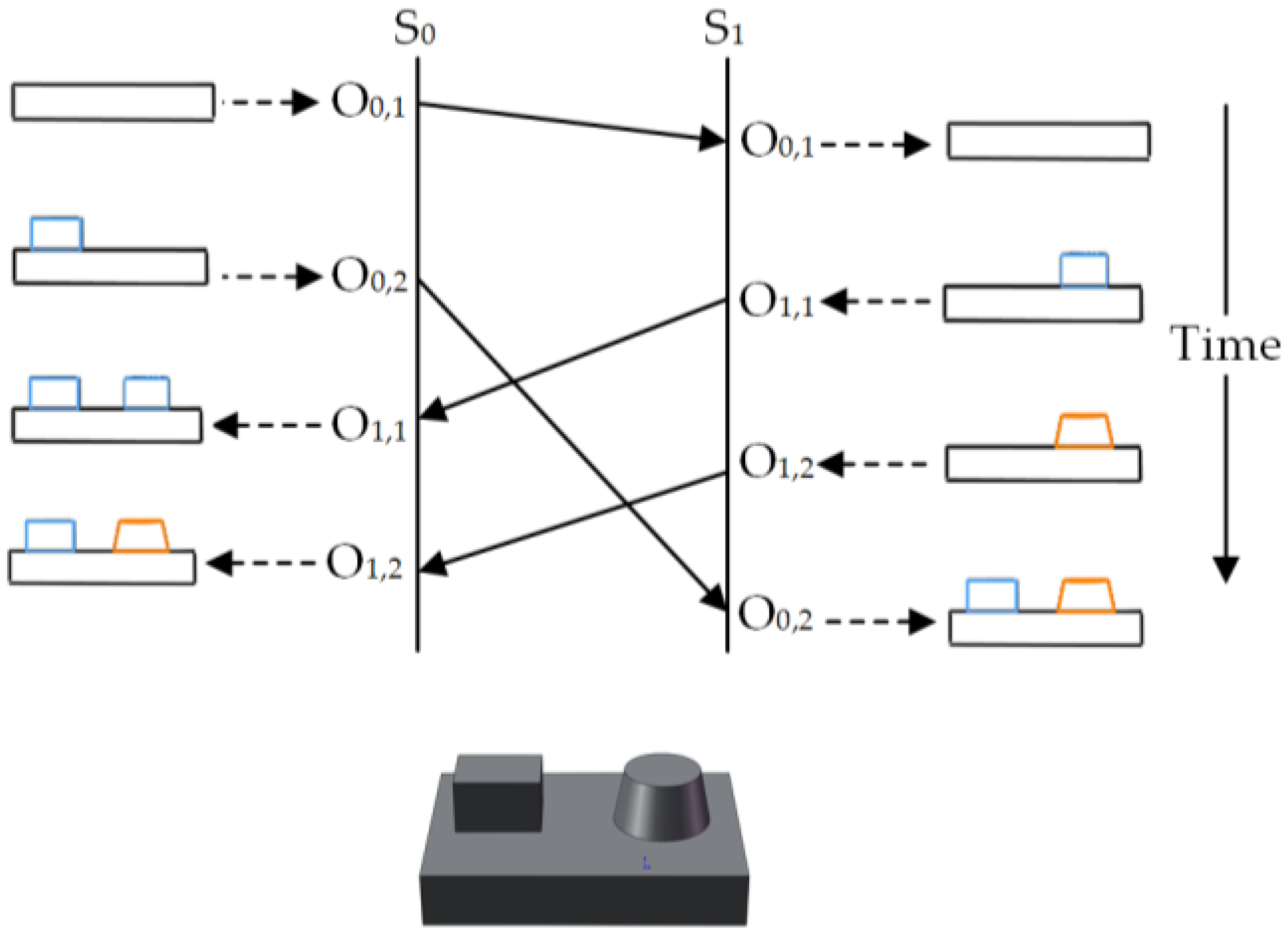

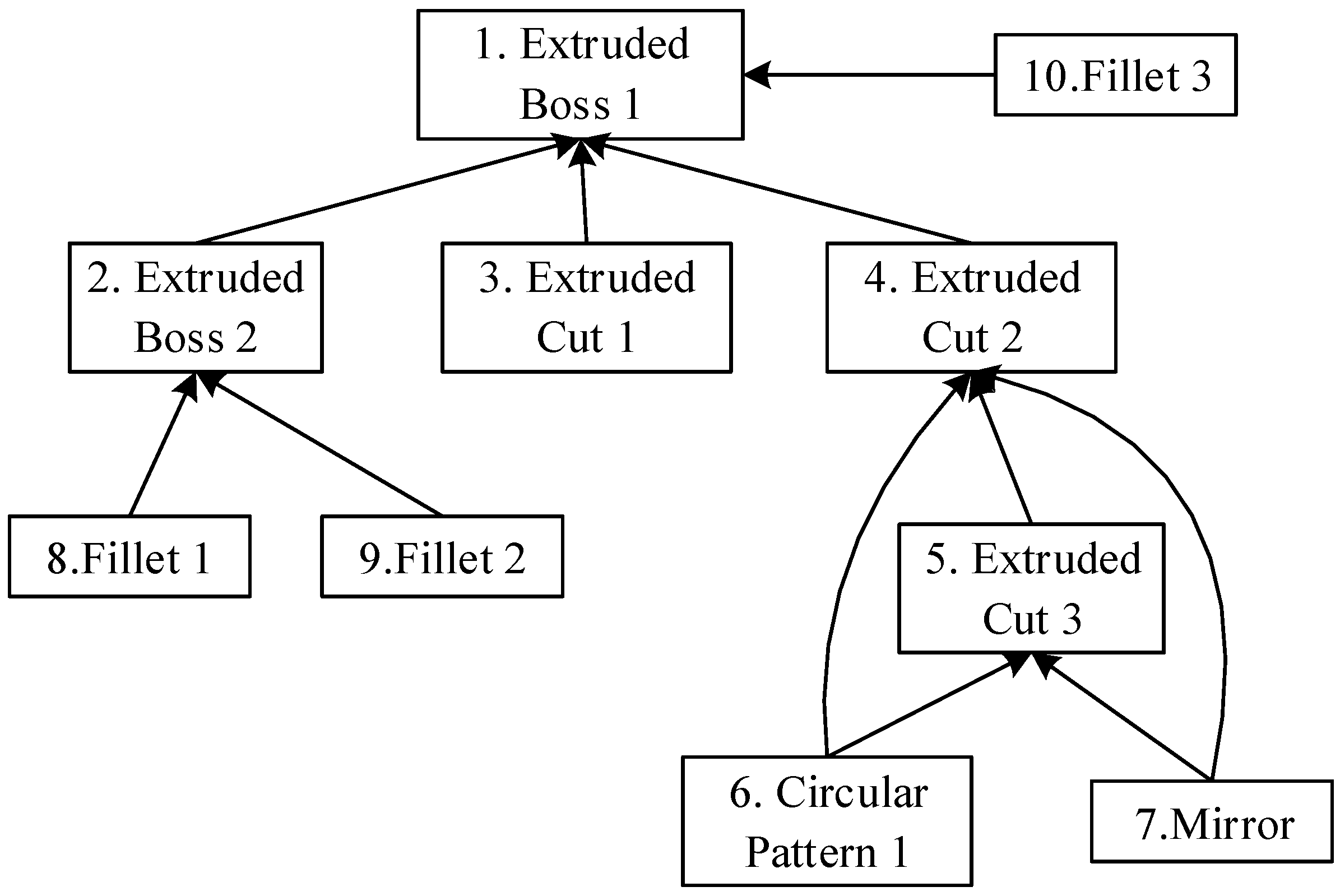
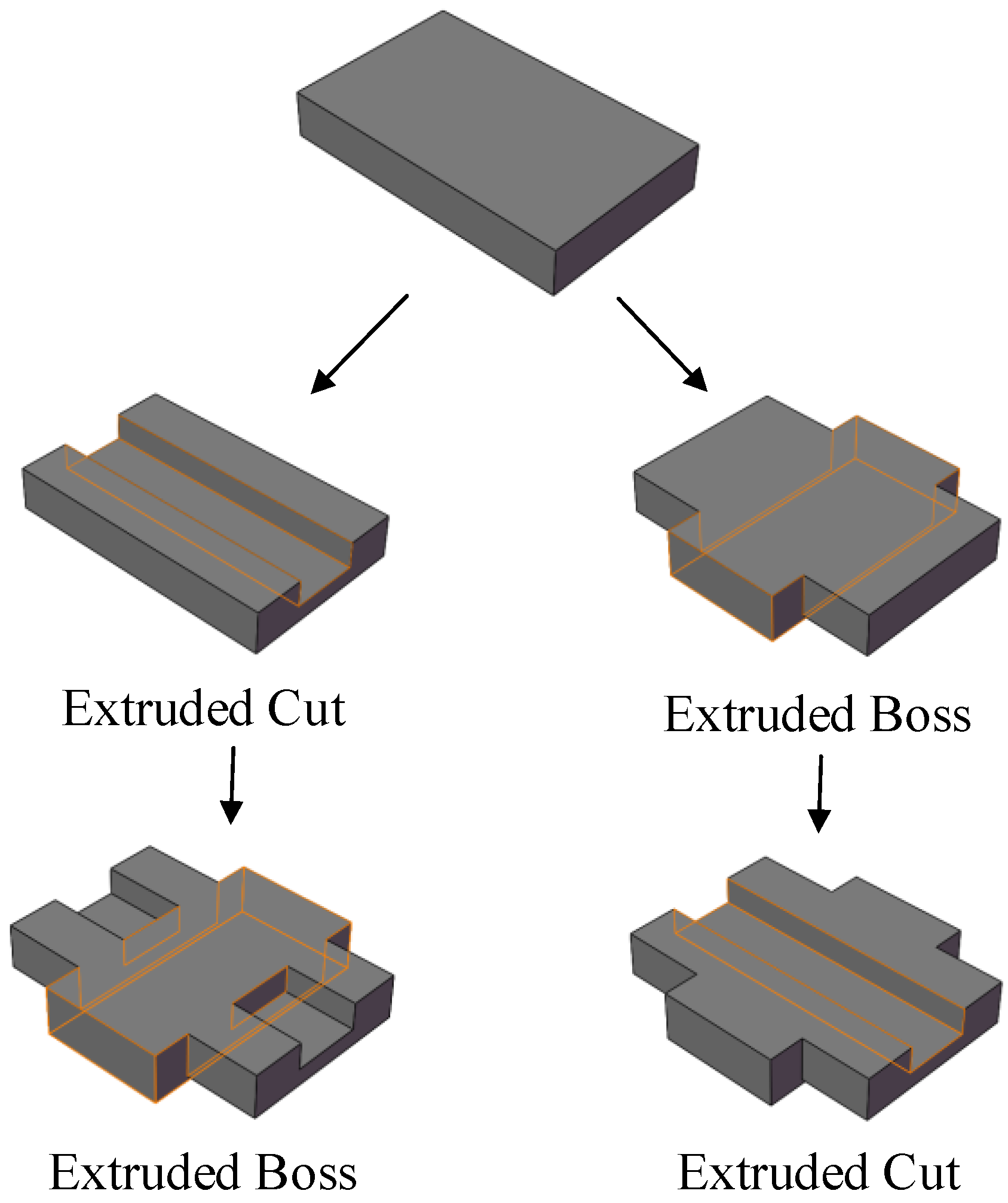
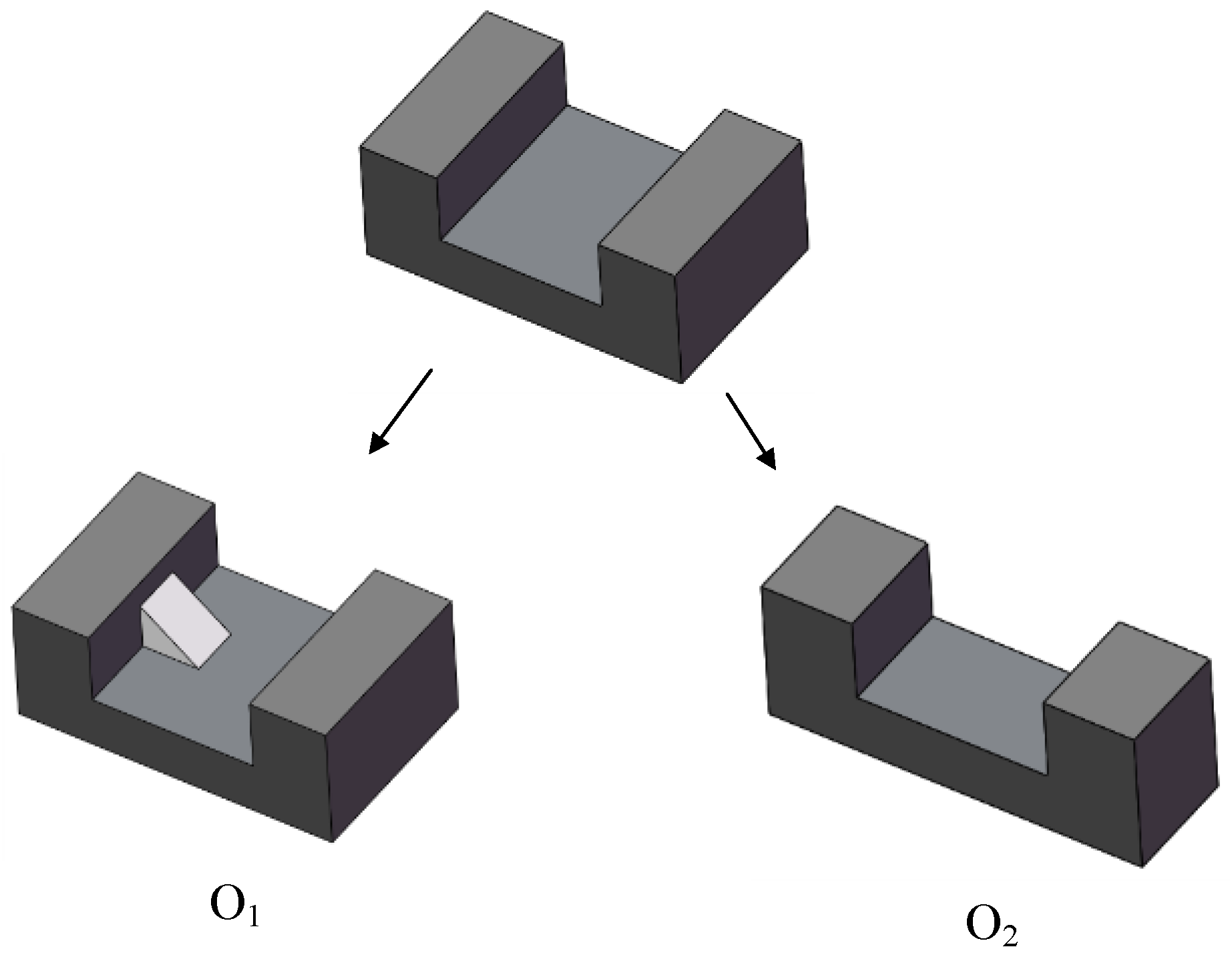

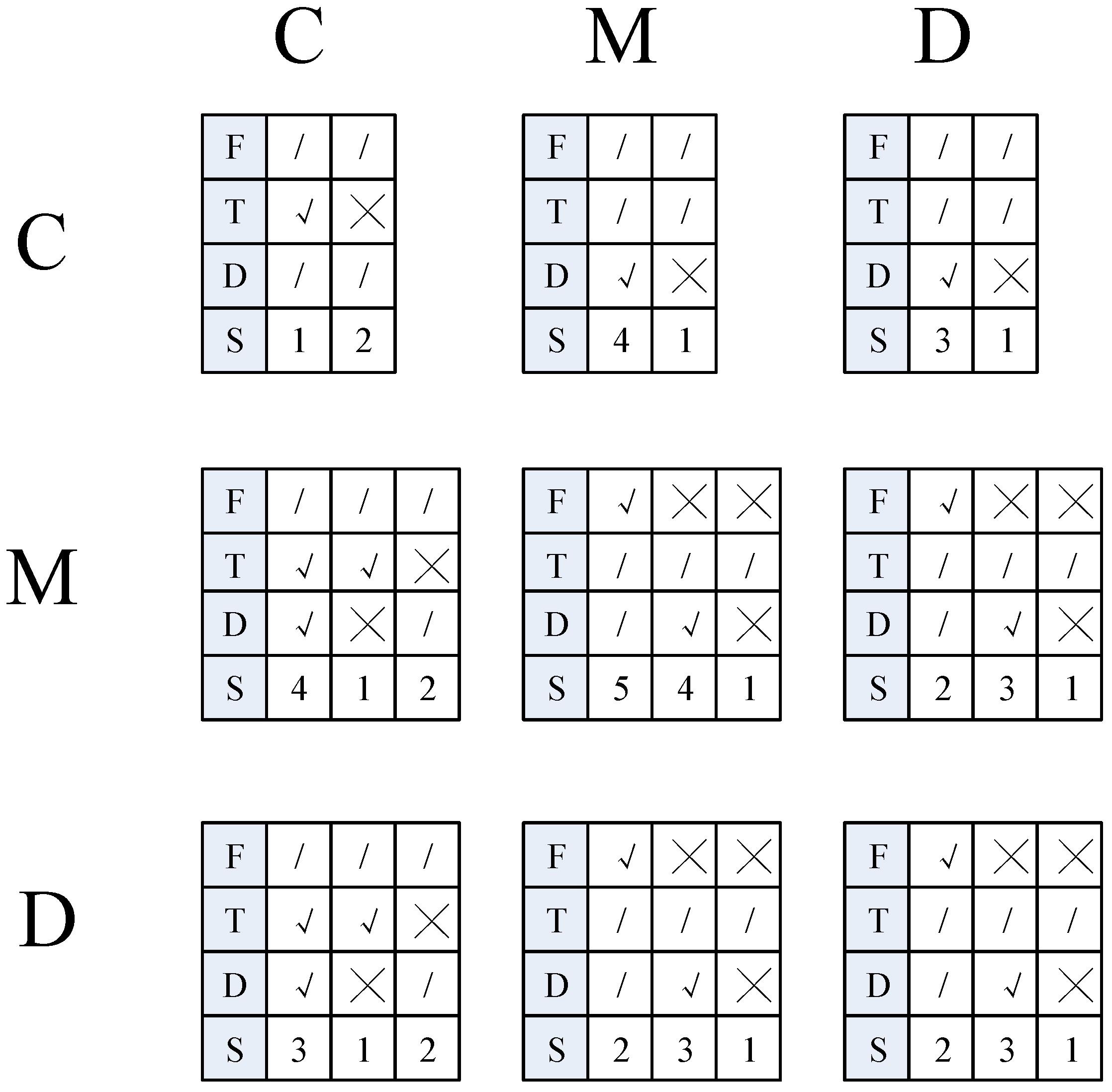


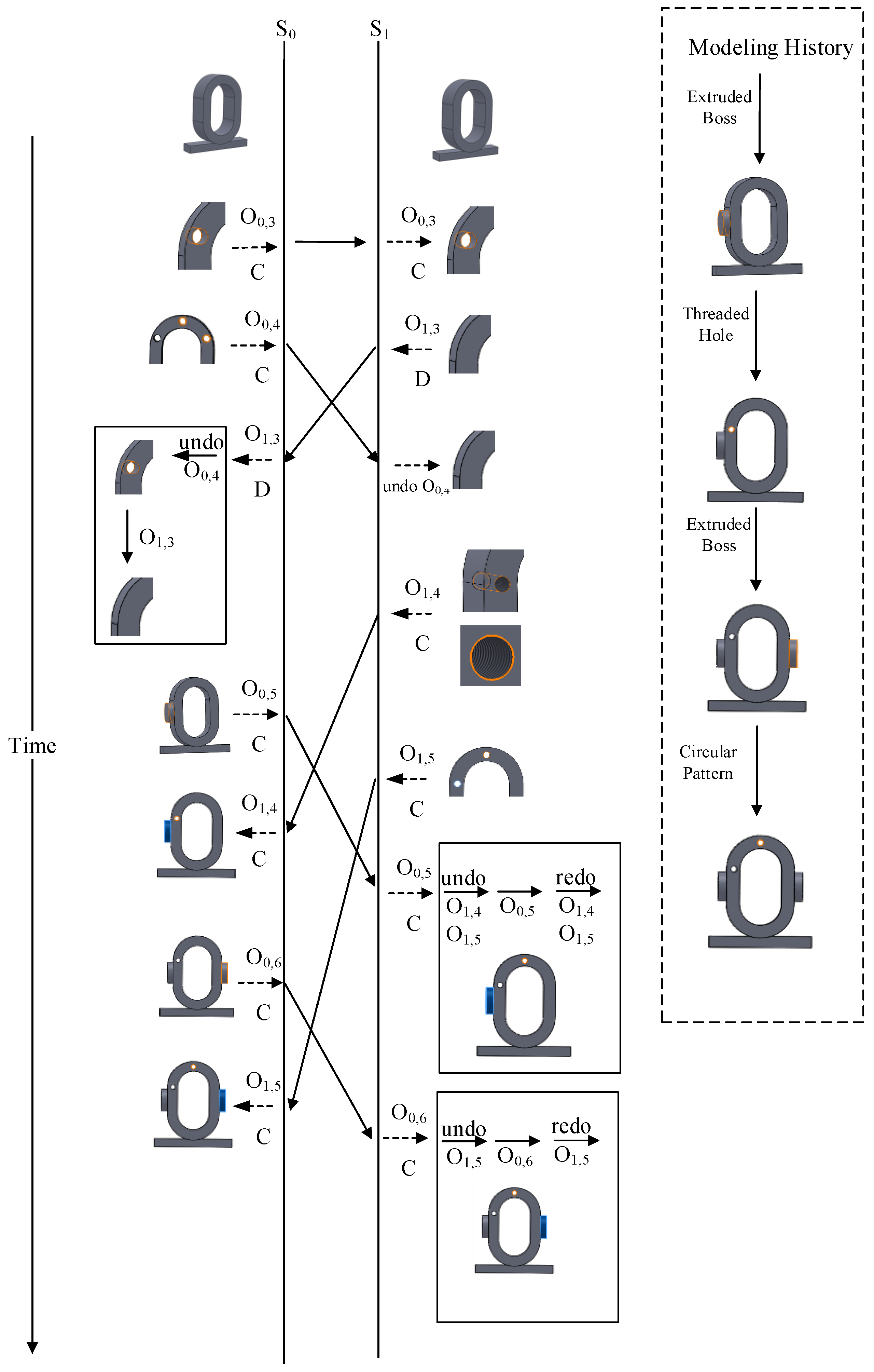


© 2017 by the authors. Licensee MDPI, Basel, Switzerland. This article is an open access article distributed under the terms and conditions of the Creative Commons Attribution (CC BY) license (http://creativecommons.org/licenses/by/4.0/).
Share and Cite
Wu, Y.; He, F.; Han, S. Collaborative CAD Synchronization Based on a Symmetric and Consistent Modeling Procedure. Symmetry 2017, 9, 59. https://doi.org/10.3390/sym9040059
Wu Y, He F, Han S. Collaborative CAD Synchronization Based on a Symmetric and Consistent Modeling Procedure. Symmetry. 2017; 9(4):59. https://doi.org/10.3390/sym9040059
Chicago/Turabian StyleWu, Yiqi, Fazhi He, and Soonhung Han. 2017. "Collaborative CAD Synchronization Based on a Symmetric and Consistent Modeling Procedure" Symmetry 9, no. 4: 59. https://doi.org/10.3390/sym9040059
APA StyleWu, Y., He, F., & Han, S. (2017). Collaborative CAD Synchronization Based on a Symmetric and Consistent Modeling Procedure. Symmetry, 9(4), 59. https://doi.org/10.3390/sym9040059






